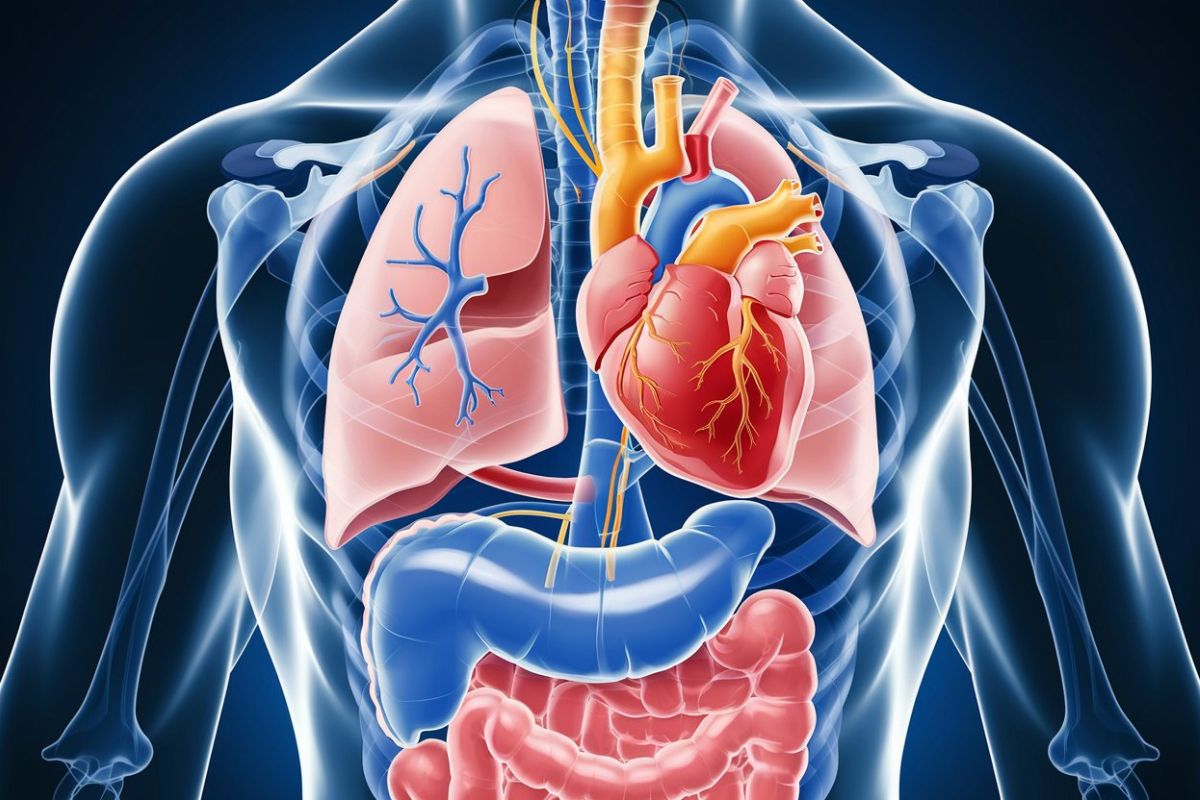
Dextrocardia with situs inversus is a rare congenital condition where the heart is situated on the right side of the chest, and the major visceral organs are mirrored from their normal positions. This fascinating anomaly affects about 1 in 10,000 people. But what does this mean for those living with it? For starters, many individuals with this condition lead normal, healthy lives without even knowing they have it. However, some may experience complications related to the heart or other organs. Understanding this condition can help in recognizing symptoms, seeking appropriate medical care, and appreciating the uniqueness of the human body. Let's dive into 40 intriguing facts about dextrocardia with situs inversus to shed light on this extraordinary condition.
Key Takeaways:
- Dextrocardia with situs inversus is a rare condition where the heart is on the right side and organs are mirrored. Many live normal lives with proper care and monitoring.
- People with dextrocardia with situs inversus can lead normal lives, participate in sports, and have normal pregnancies with closer monitoring. It's a rare but manageable condition.
What is Dextrocardia With Situs Inversus?
Dextrocardia with situs inversus is a rare congenital condition where the heart is located on the right side of the chest, and the major visceral organs are mirrored from their normal positions.
- Rare Condition: Only about 1 in 10,000 people are born with dextrocardia with situs inversus.
- Genetic Factors: This condition can be inherited, often following an autosomal recessive pattern.
- Mirror Image: The term "situs inversus" means that the organs are a mirror image of their normal positions.
- Normal Function: Despite the unusual arrangement, many individuals with this condition have normal heart and organ function.
- Discovery: Often discovered through imaging tests like X-rays or MRIs when investigating other health issues.
Symptoms and Diagnosis
Symptoms can vary widely, and diagnosis often involves multiple tests to confirm the condition.
- Asymptomatic: Many people with dextrocardia with situs inversus experience no symptoms.
- Respiratory Issues: Some may have respiratory problems due to associated conditions like Kartagener syndrome.
- Heart Murmurs: Heart murmurs can be a sign, leading doctors to investigate further.
- Imaging Tests: X-rays, echocardiograms, and MRIs are commonly used to diagnose the condition.
- Genetic Testing: Genetic tests can help confirm the diagnosis and identify any related genetic disorders.
Associated Conditions
Dextrocardia with situs inversus can sometimes be linked with other health issues.
- Kartagener Syndrome: About 25% of those with this condition also have Kartagener syndrome, which affects the cilia in the respiratory tract.
- Congenital Heart Defects: Some individuals may have congenital heart defects that require medical attention.
- Digestive Issues: Rarely, digestive problems can occur due to the reversed organ placement.
- Immune System: Some studies suggest a possible link to immune system irregularities.
- Liver Function: The liver's reversed position can sometimes affect its function, though this is uncommon.
Treatment and Management
Managing dextrocardia with situs inversus often involves regular monitoring and addressing any associated conditions.
- Regular Check-ups: Regular medical check-ups are crucial to monitor heart and organ function.
- Surgery: In cases of congenital heart defects, surgery may be necessary.
- Respiratory Therapy: Those with Kartagener syndrome may need respiratory therapy to manage symptoms.
- Medication: Medications can help manage symptoms related to associated conditions.
- Lifestyle Adjustments: Healthy lifestyle choices, including diet and exercise, can support overall health.
Living with Dextrocardia With Situs Inversus
Living with this condition can be normal with proper care and awareness.
- Normal Life Expectancy: Many individuals live a normal life span with proper medical care.
- Sports and Activities: Most can participate in sports and physical activities without restrictions.
- Pregnancy: Women with this condition can have normal pregnancies, though they may need closer monitoring.
- Mental Health: Psychological support can be beneficial, especially for children and adolescents.
- Community Support: Support groups and online communities can provide valuable resources and connections.
Interesting Facts
Here are some intriguing tidbits about dextrocardia with situs inversus.
- Historical Cases: The condition has been documented in medical literature for centuries.
- Celebrity Cases: Some celebrities, like Enrique Iglesias, are rumored to have this condition.
- Animal Kingdom: Similar conditions have been observed in animals, including cats and dogs.
- Medical Curiosity: It often fascinates medical students and professionals due to its rarity and unique presentation.
- Cultural References: The condition has been referenced in TV shows and movies, adding to its mystique.
Research and Future Directions
Ongoing research aims to better understand and manage this rare condition.
- Genetic Research: Scientists are exploring the genetic basis of dextrocardia with situs inversus.
- Improved Imaging: Advances in imaging technology are helping doctors diagnose the condition more accurately.
- Treatment Innovations: New treatments and surgical techniques are being developed to address associated conditions.
- Patient Registries: Patient registries are being created to collect data and improve understanding.
- Awareness Campaigns: Efforts are underway to raise awareness among healthcare providers and the public.
Fun Facts
Some light-hearted facts to round out our exploration of this fascinating condition.
- Mirror Twins: In rare cases, identical twins can have mirrored organ placement, with one having dextrocardia with situs inversus.
- Medical Marvels: Doctors often consider patients with this condition as medical marvels due to their unique anatomy.
- Art and Science: The condition has inspired artists and writers, blending the worlds of art and science.
- Educational Tool: Medical schools often use cases of dextrocardia with situs inversus as educational tools.
- Global Occurrence: The condition occurs worldwide, affecting people of all ethnic backgrounds.
The Fascinating World of Dextrocardia With Situs Inversus
Dextrocardia with situs inversus is a rare condition where the heart and other organs are mirrored from their usual positions. This unique arrangement often goes unnoticed without medical imaging since many individuals live normal, healthy lives. However, it can sometimes be associated with other congenital issues, so regular check-ups are essential. Understanding this condition helps demystify the human body's incredible variability and resilience.
Learning about dextrocardia with situs inversus not only broadens our knowledge but also fosters empathy for those living with rare medical conditions. If you or someone you know has this condition, staying informed and maintaining open communication with healthcare providers is key. The human body never ceases to amaze, and dextrocardia with situs inversus is just another example of its extraordinary complexity.
Frequently Asked Questions
Was this page helpful?
Our commitment to delivering trustworthy and engaging content is at the heart of what we do. Each fact on our site is contributed by real users like you, bringing a wealth of diverse insights and information. To ensure the highest standards of accuracy and reliability, our dedicated editors meticulously review each submission. This process guarantees that the facts we share are not only fascinating but also credible. Trust in our commitment to quality and authenticity as you explore and learn with us.


